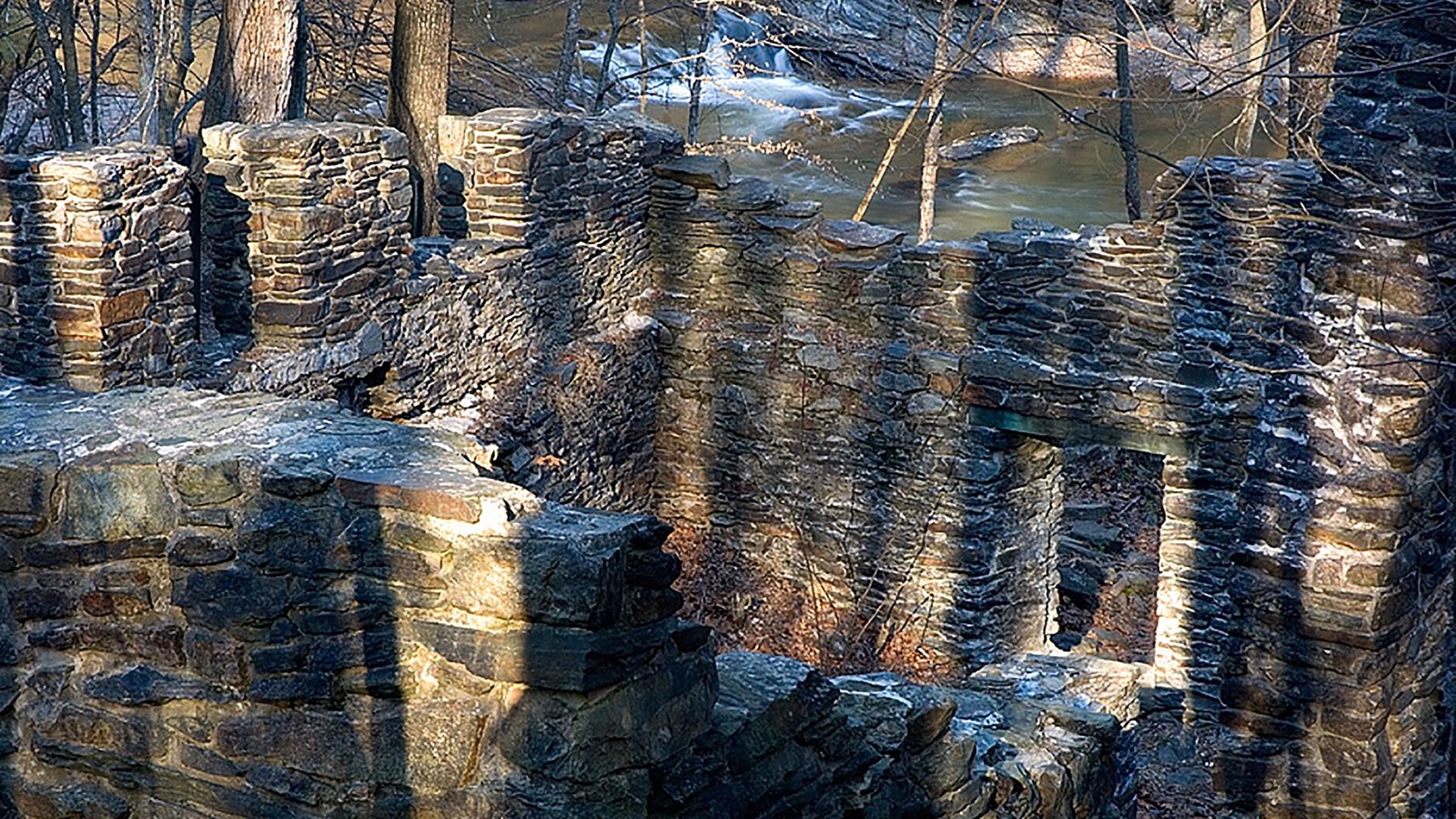Last updated: February 24, 2021
Place
Marietta Paper Mill Ruins

NPS VIP?Tom Wilson
Scenic View/Photo Spot
Nestled in the woods, on the banks of Sope Creek, are stone walls that serve as a reminder of a not to distant past. Once the largest paper mill in the state, if its ruins could speak they would tell us about life in the second half of the 19th. Century.
Early Years
Construction on the Marietta Paper Mill began in 1853 and production began two years later in 1855. The Paper Mill included a mill, oil room, mill sluice (raceway), storeroom, dam, machine shop, pulp-grinding mill and two shelters. The Marietta Paper Mill was known as a “rag mill.” This was due to the paper being made from linen rags and old cotton. The abundance of water from Sope Creek and a dam upstream made the paper making process successful at the mill. The job of the mill was to make and provide paper to most of the south from 1855 to 1902. Initially the mill produced writing paper, printing paper, tissue paper, and wrapping paper.
Civil War Years
At the time of the Civil War, the Marietta Paper Mill was the largest in the state. During the war years the mill manufactured cartridge paper used in Confederate guns. The mill was even rumored to have printed Confederate money and bonds therefore nicknaming it the “Confederate Mint.” However, those claims have never been substantiated. This made it a target of destruction during Sherman’s Atlanta Campaign. General William Tecumseh Sherman devised a plan to burn everything that would help the South and prolong its fighting in the Civil War. Union soldiers, led by General Gerrard, burned the mill. There are conflicting reports whether the mill was burned on July 5 or July 6, 1864 by the Union Army.
Post War Years
After the Civil War, the paper mill was rebuilt and back in operation by September 1868. However, on the morning of November 7, 1870, a mill worker accidentally caused a fire which partially destroyed the factory. They rebuilt the damaged part of the mill and four months later they were once again producing paper. The mill struggled financially for a while and then went bankrupt.
The mill was sold at public auction and renamed the Marietta Paper Manufacturing Company. The Marietta Paper Manufacturing Company was successful due to two new innovations:
- using the abundant pine trees for pulp
- converting to the production of twine.
These innovations, implemented by Jefferson Land, helped the mill financially for many years. But due to another fire at the mill, increased competition, being in a remote location and not being close enough to a railroad, the mill was losing money. The mill was finally closed in 1902.
Today
The ruins, although deteriorating are not forgotten, remain a tourist attraction due to their beauty and and as a reminder of the past. They are listed on the National Register and it is now the responsibility of the National Parks Service to balance the preservation of the ruins while sharing their beauty.
